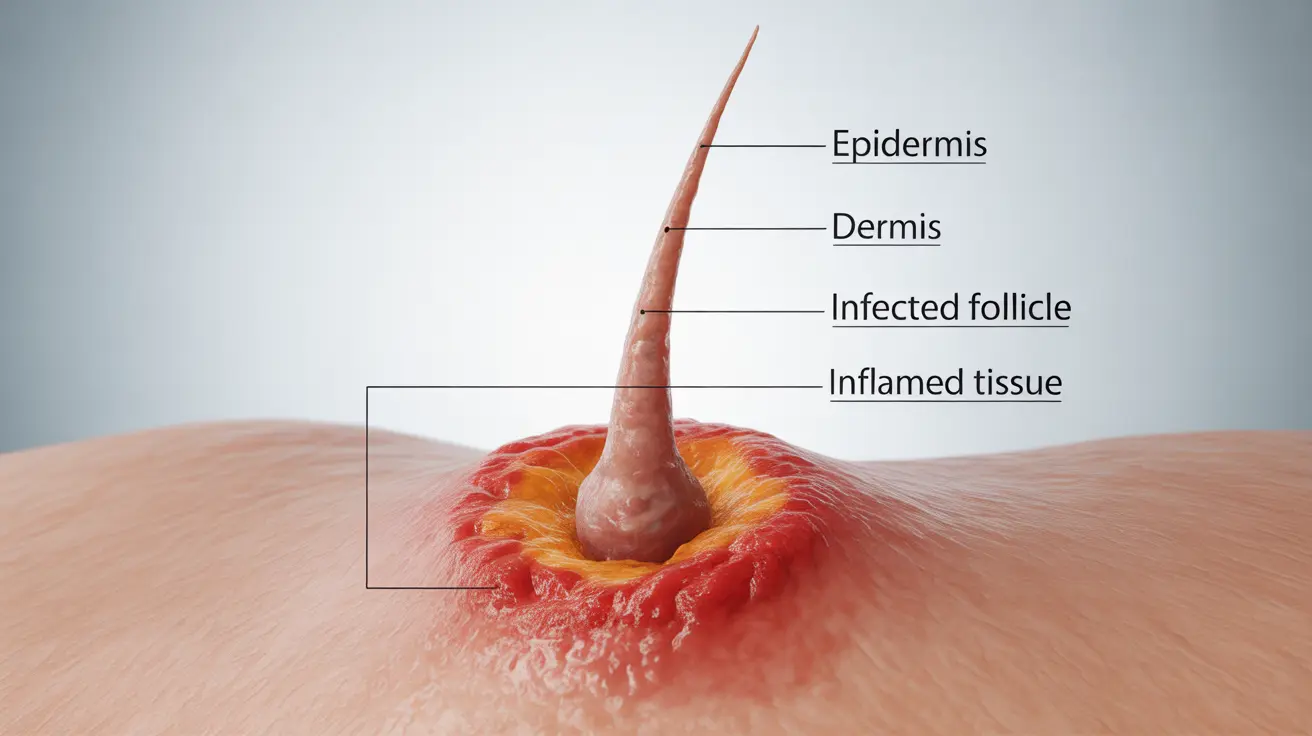Dealing with a boil that hasn't formed a head can be both uncomfortable and concerning. These painful, pus-filled bumps under the skin need proper care and attention to prevent complications and promote healing. Understanding how to manage a boil without a visible head is crucial for effective treatment and avoiding potential complications.
This comprehensive guide will walk you through safe treatment methods, warning signs to watch for, and when medical intervention becomes necessary. We'll also discuss important prevention strategies to reduce your risk of future boils.
Understanding Boils Without Heads
A boil without a head is an early-stage skin infection where bacteria, typically Staphylococcus aureus, has infected a hair follicle or oil gland. At this stage, the infection is deep under the skin and hasn't yet formed a visible white or yellow center (head) where pus collects.
These early-stage boils typically appear as:
- Red, swollen areas on the skin
- Tender or painful to touch
- Warm to the touch
- Firm under the skin
- Gradually increasing in size
Safe Home Treatment Methods
While it may be tempting to try to drain a boil that hasn't come to a head, proper home care is essential for safe healing:
Warm Compress Application
Apply warm, moist compresses to the affected area 3-4 times daily for 20 minutes each session. This helps:
- Increase blood circulation to the area
- Draw the infection toward the surface
- Reduce pain and discomfort
- Encourage natural drainage when ready
Proper Hygiene Practices
Maintaining cleanliness is crucial during treatment:
- Wash hands thoroughly before and after touching the area
- Keep the affected area clean with mild soap and water
- Use clean compresses for each application
- Avoid sharing personal items that may contact the boil
Warning Signs and Medical Attention
While many boils can be treated at home, certain symptoms require professional medical care:
Seek Immediate Medical Care If:
Watch for these serious signs:
- Fever develops
- The boil is larger than 2 inches in diameter
- Multiple boils appear
- The boil is on your face or spine
- Severe pain develops
- Redness spreads significantly
- You have diabetes or a weakened immune system
Prevention Strategies
Taking preventive measures can help reduce your risk of developing future boils:
- Practice good personal hygiene
- Keep skin clean and dry
- Avoid sharing personal items
- Treat any small cuts or scrapes promptly
- Boost immune system through healthy lifestyle choices
- Change and wash clothes, towels, and bedding regularly
Frequently Asked Questions
Why should I not pop or drain a boil that has no head?
Attempting to pop or drain a boil without a head can force the infection deeper into the skin, spread bacteria to other areas, and potentially cause serious complications including bloodstream infections.
How can I safely treat a boil without a head at home?
Apply warm compresses several times daily, keep the area clean, practice good hygiene, and avoid putting pressure on the boil. Over-the-counter pain relievers can help manage discomfort.
When should I see a doctor for a boil that won't come to a head?
Seek medical attention if the boil is large (over 2 inches), accompanied by fever, extremely painful, spreading, or located on your face or spine. Also see a doctor if you have diabetes or a compromised immune system.
What are the risks of trying to open a boil on my own?
Attempting to open a boil yourself can lead to deeper infection, scarring, spread of bacteria to other areas, and potentially dangerous bloodstream infections. It may also delay proper healing.
How can I prevent boils from recurring or spreading to others?
Practice good hygiene, keep skin clean and dry, avoid sharing personal items, treat cuts promptly, maintain a healthy lifestyle, and wash bedding and clothes regularly. If you have a boil, keep it covered and avoid close contact with others until it heals.




